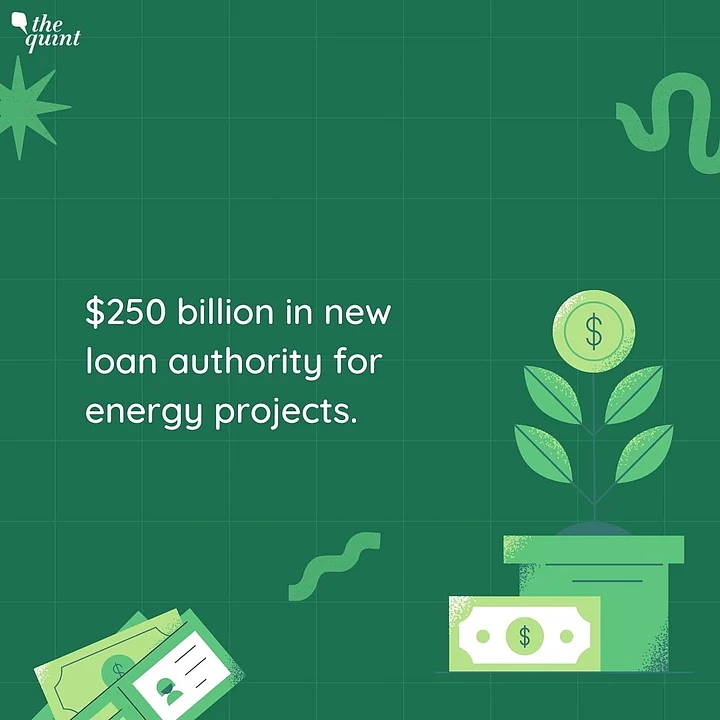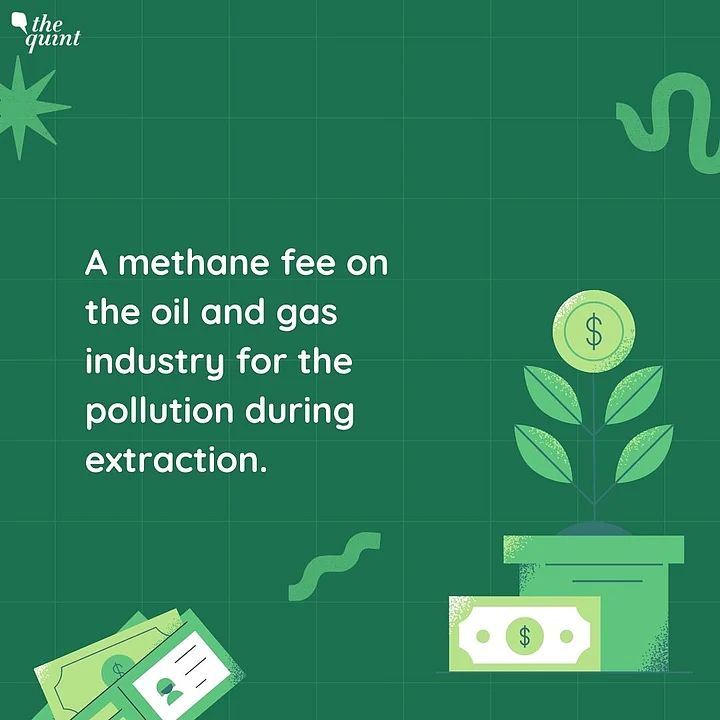After 18 long months of negotiations, the Democrats are now a step closer to passing their Climate Change Bill. The bill has been sent forth to the House of Representatives, where the Democrats hold a majority. It is expected that the bill will be passed as soon as next week.
The bill will direct $369 B toward clean energy and put the US economy on track to cut emissions 40 percent or more by 2030. This would be the largest US climate investment in history.
The Climate Change Bill, a part of a much larger package called the Inflation Reduction Act, includes a budget for Climate Action, Tax, and Healthcare. The Act tackles multiple goal of the Democrats, including countering the effects of climate change, lowering the cost of medicine, and transforming parts of the tax code in hopes of making it more equitable.
Key Elements of the Inflation Reduction Act of 2022
Tens of billions to decarbonise the economy through tax credits for clean electricity and energy storage
$250 billion in new loan authority for energy projects
$60 B to decarbonise American manufacturing for industries like steel, cement, and aluminum
A methane fee on the oil and gas industry for the pollution during extraction
$60 B to advance environmental justice in disadvantaged communities
EV tax credits – a $4,000 tax credit for lower- and middle-income groups
Americans to buy used clean vehicles, and up to $7,500 to buy new clean vehicles
$9 B in rebates for consumers to purchase electric appliances
Over $20 B for forest conservation and stewardship and climate-smart agriculture
"In the prior administration, I think the rest of the world lost faith in the United States in terms of our commitment to climate. This doesn’t just restore that faith in the United States, but it creates an opportunity zone that other countries can start thinking about. For far too long we’ve talked about climate change as a sacrifice. This is not a sacrifice, to actually grow good-paying union jobs. It’s not a sacrifice to save people money, in their homes, in their vehicles, in their lives. This is actually going to show the rest of the world that we’re not just back, but we’re going to lead again."Gina McCarthy, White House National Climate Advisor on MSNBC
Where Did This Bill Come From?
While the Inflation Reduction Act was only introduced in the Senate a week ago, the battle for approving new funding for climate change and healthcare has been ongoing for months.
Early November 2021 saw the Democrats trying to push a 2.2 trillion dollar budget through the Senate. The Build Back Better framework was an essential part of Biden’s campaign during the Presidential Elections.
The plan targeted a much larger spectrum of problems the government has been attempting to tackle. The BBB intended to tackle Childcare, Healthcare, Climate Change, Housing and Taxes, among others.
Considering the much larger budget and target area, the bill was met with much expected resistance in the Senate. The Democrats could not garner the entirety of their own party to support the plan, which was later set aside and declared dead by January.
How Does the Inflation Reduction Act Help?
The Inflation Reduction Act has been approved for a budget of 700 billion dollars after a night of debates and amendment votes. The Act includes legislation that allows the government to negotiate for lower prices for prescription medication.
It also includes a minimum of 15 percent tax on corporations that make more than 1 billion dollars a year in profits. However, this issue is still causing major contention in Congress and is vehemently opposed by business corporations who argue that it would limit investments.
"This bill is seemingly the largest investment in national climate action, ever. It takes a broadly market-friendly approach, focused on accelerating demand for key products necessary for the transition – this should accelerate technological progress and create an incentive for even more private investment. Technology costs coming down in the US should lead to lower costs globally, too."Brian O’Callaghan, Lead Researcher and Project Manager of the Oxford University Economic Recovery Project
The Largest American Investment Against Climate Change
The Act sets aside nearly 400 billion dollars for Climate Action, that is to be invested over 10 years in Tax Credits. The aim is to encourage consumers to purchase eco-friendly alternatives for household items.
More specifically, households may receive up to 7,000 dollars in tax credits to purchase an electric car.
Billions out of the total budget are set aside for the production of clean technology through solar panels and wind turbines.
"This is the vote heard around the world. It puts America on a path to creating 550,000 new clean energy jobs while reducing economy-wide emissions 40% by 2030. This is a generational opportunity for clean energy after years of uncertainty and delay."Heather Zichal, CEO of American Clean Power
There will be 60 billion dollars set aside for those in areas most affected by pollution from fossil fuels.
500 million dollars are to be invested into the heats pumps and critical minerals processing through the Defense Production Act; and 27 billion will go towards creating America’s first "green bank" to help direct investments in climate change and clean technology projects.
The Act will also force oil companies to pay fees as penalty for any methane gas leaks. This would also counter a decade-long moratorium on offshore wind leasing set up during Donald Trump’s Presidency.
However, as compensation, the Democrats have agreed to a number of provisions regarding fossil fuels and drilling. These were concessions to Senator Joe Manchin, who has been in vehement disagreement of both the Build Back Better plan and the Inflation Reduction Act. However, this measure would ensure tax credits for carbon capture technology so coal and gas plants can still operate, but at much lower emissions.
Experts believe this investment in climate action could ensure that the US cuts down on greenhouse gas emissions by 40 percent below the 2005 levels by the end of this decade.
"The Senate just made climate history. This is the most significant action the US has ever taken to combat climate change. It will benefit the people of all 50 states – their health, their wallets, their homes and their future. And it will help the US deliver on its undeniable responsibility to the rest of the world to do its part to address this global crisis. The House needs to come back quickly to cement this essential climate action. There is no time to waste. This bill is not perfect, but from a climate pollution perspective, the positives heavily outweigh the negatives – by a factor of 10."Manish Bapna, President and CEO of NRDC
Why Now?
The US is now over a year and half into Democrat rule under Joe Biden’s presidency. However, his rating has been dropping considerably, with over half the population unsatisfied with his response to inflation rates and COVID-19.
The Inflation Reduction Act could not have come at a better time, especially when the Democrats capability was brought into question. While not the multi-trillion dollar plan he had originally promised, if pulled off, Biden would still be coming close to fulfilling part of his campaign claims. This could be a turning point for Democrats in the eye of the public. But only time will tell if the Act can be successfully executed.
(At The Quint, we question everything. Play an active role in shaping our journalism by becoming a member today.)










